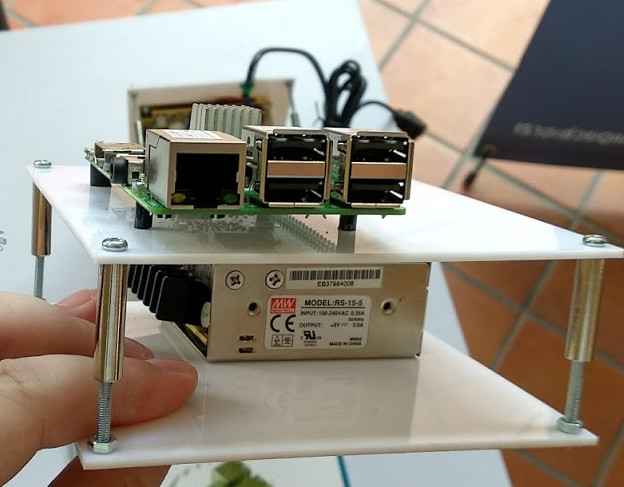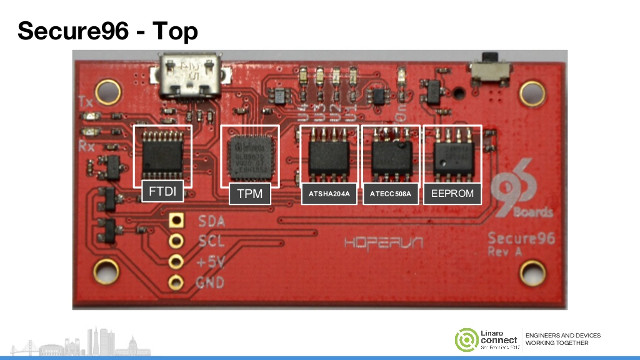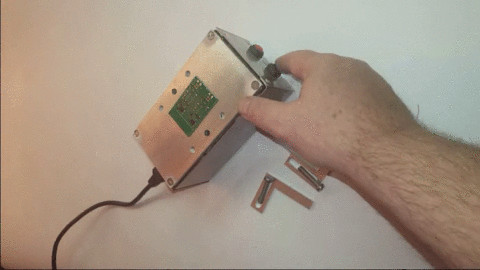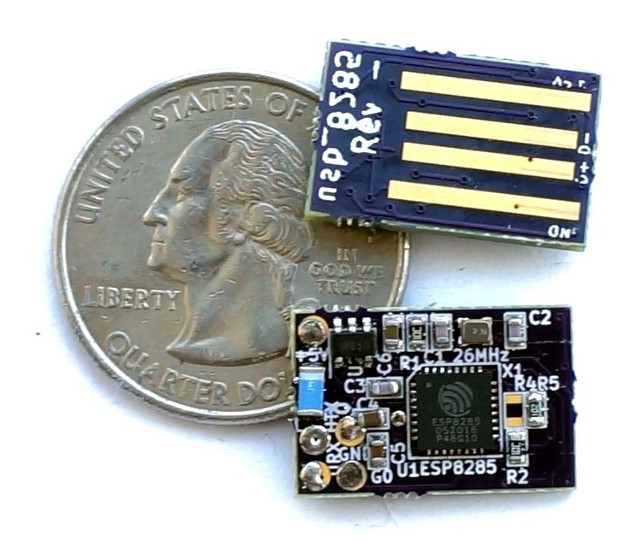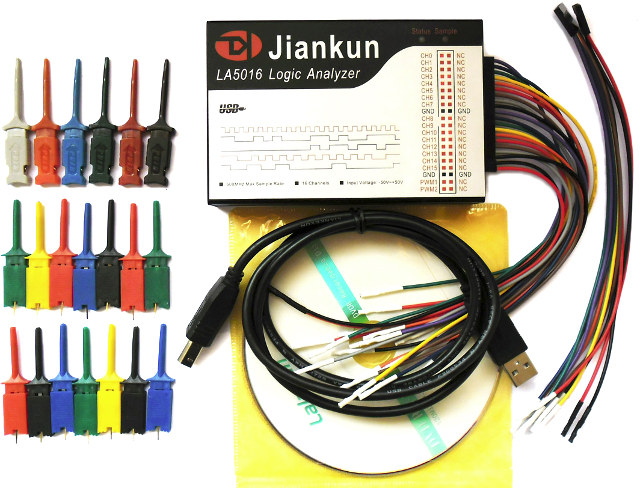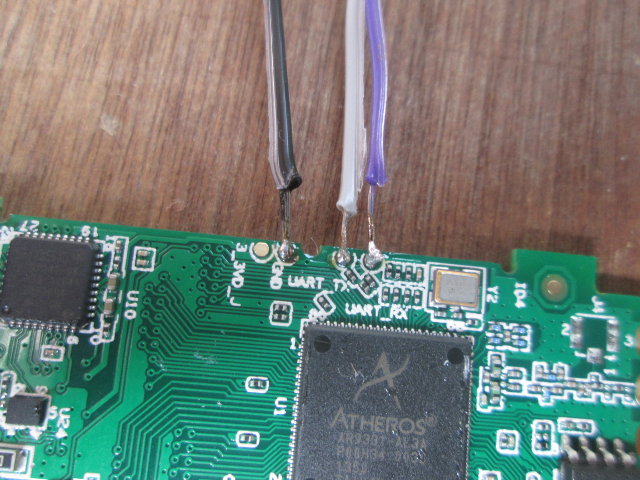While some people or organizations with lots of boards may use high-end USB hubs to power and control them, most people likely use wall adapters to power their development boards like Raspberry Pi 3, ASUS Tinkerboard, Orange Pi PC, and so on. At least that’s what I do, except in some cases when I suspect power issues, and I go with a more powerful SMPS (switch mode power supply). I don’t use it often because it’s a large brick and expose 220V. But the other day, as I attended Chiang Mai Maker Party, I found one maker uses some tiny (and cute) power supply from a company called Mean Well to power his Raspberry Pi boards. The model used above with RS-15-5 with takes 100-240VAC 0.35A input, and output 5VDC up to 3A. The power supply include AC Neutral, AC Live, Ground, DC V+ and DC V- pins where you […]
CHUWI LapBook 14.1 Laptop Manufacturing Changes – Hardware at Launch vs Several Months Later
Products may evolve over time due to parts becoming phased out (EOL), so company often issues PCN (product change notices) to the company for example to replace eMMC flash that’s not manufactured anymore by a new one. They won’t change any advertised features, so the product specifications should remain the same. Reviewers normally get product from one of the first batch of production, and if you purchase the product a few months later, after carefully reading reviews, you may end up with a device slightly different. But in some cases, the company makes major changes, while still delivering the same advertised hardware specifications. That’s apparently the case for CHUWI LapBook 14.1 laptop. The photo below shows how it looked internally for the sample I reviewed. If you zoom on the photo, you’ll find an M.2 slot on the bottom of the right PCB, potentially allowing you to add an SSD […]
Secure96 is a 96Boards Mezzanine Expansion Board To Experiment with Hardware Based Security
With the Internet of things booming and taking a more important role in our lives, security will become more and more critical. So far, it has often been an afterthought with modems & routers frequently shipping with default username and password, and getting security right is really hard, as shown by the recent CLKSCREW attack that somehow leverages DVFS to break ARM TrustZone security, and that “is not a software bug, nor a hardware bug, it’s a fundamental part of the energy management design”, so most ARM platforms are vulnerable. Optimal security normally combines software and hardware, so having a platform to experiment with different HW security solutions would be useful, and that’s what Secure96 Mezzanine board for 96Boards aims for. Secure96 expansion board specifications: Security ICs Microchip Atmel ATSHA204A SHA-based CryptoAuthentication crypto element device Microchip Atmel ATECC508A crypto device with ECDH (Elliptic Curve Diffie–Hellman) key agreement Infineon SLB 9670 TPM […]
ReflowR is a $99 SMT Reflowing Tool for Makers and Students
You can solder SMT components to your custom board by hand, but it would be much faster if you could get a reflow tool instead to “bake” your board after placing the components. ReflowR SMT reflowing tool offers just that in a small and affordable form factor. Some people have tried to use DIY solutions to bake their board, but results may vary. ReflowR has been specifically designed to heat PCB offering constant results. It supports reflow, rework, MSD bake, or rework pre-bake, and follows JEDEC reflow profiles. You can also add a WiFi extension to monitor the tool from your smartphone and set the temperature profile. Two version are available: Smart ReflowR – Compact 600W system for for makers and learners. Large ReflowR – Larger 1200W system for professionals “STEM Inspiration kits” are also offered without a ReflowR kit, but with multiple components, solder paste, a few PCBs, tweezers, […]
USB Fun – Tiny USB WiFi and Hub Boards and micro USB Hub
I’ve come across a few interesting tiny USB boards and hubs in the last few days, so instead of writing a post for each, I’ve gathered all info into a single article. Small ESP8285 USB Board A couple of weeks ago, CNLohr released his first ESPUSB virtual USB implementation for ESP8266 allowing to use USB with external hardware, barring a resistor, and only two GPIOs. He has now made a tiny board based on ESP8285 with a USB interface leveraging ESPUSB. Hardware files can be found on github. So what can you do with it? CNLohr leveraged the work of the community in order to emulate a keyboard and mouse using a smartphone. The only bit of bad news in the video is that finally USB full speed (12 Mbps) can’t be supported. NanoUSB Hub Board Mux wanted to add more USB devices to its tablets, but there was none […]
Inside LG 4K TV, and My (Unsuccessful) Attempt at Repairing It
Long time readers of this blog may remember that I organized a crowdfunding event aiming at raising funds to buy equipment to test 4K TV boxes and mini PCs in early 2015, and one of the items I ended up purchasing was LG 42UB820T 4K television. It worked well for over a year, but I started to notice a single vertical appear on the TV in June, or about 18 months after purchase. A few more lines appeared in the following week, and it appears to have stabilized as shown in the picture below. While I understand that in Europe a 2-year warranty period is legally required, I’m based in Asia, and all I got was a one year warranty for the TV. So I had three choices: Ignore the problem Pay for the repairs Try to repair it myself So far, I’ve selected solution 1. because that’s the easiest […]
LA1016, LA2016, and LA5016 Logic Analyzers Cost as Low as $75
I remember 10+ years ago, when my managers argued whether buying a logic analyzer, because some of its functions could be done by an oscilloscope, and logic analyzers were selling for a few thousands dollars at the time. Fast forward to 2014, it’s now possible to acquire lower end logic analyzers that connect to a PC for as low as $75 thanks to products such as LA1016, LA2016, and LA5016, all supports 16-channels and respectively 100, 200 and 500 Mbps sampling rate. Key features and specifications: Input channels – 16 Max Sampling Rate: LA1016: 100M; LA2016: 200M; LA5026: 500M Measurement Bandwidth – LA1016: 20M; LA2016: 40M; LA5016: 80M Min pulse width – LA1016: 20ns; LA2016: 12.5ns; LA5016: 6.25ns Hardware memory size – LA1016/LA2016: 1Gbits; LA5016: 512Mbits Hardware sampling depth – LA1016/LA2016: 50M/channel; LA5016: 32M/channel Max compressed depth – LA1016/LA2016: 10G/channel; LA5016: 5G/channel Input voltage range – -50V ~ +50V Input […]
Zsun SD111 Wi-Fi Flash Drive Hacking Tentative
Two days ago, I reviewed Zsun SD111 a 8GB Wi-Fi flash drive based on Atheros AR9331, and I discovered the telnet port was open, but I could not access it because none of the standard username and password combinations (root/root, admin/admin, root/admin, etc…) would work, which is actually a good thing. However, as I opened the stick, the serial pins were clearly marked, so today I’ve soldered some Dupont wires to access the serial console. In order to open the stick, you need a rigid sharp object to push the top cover via the neck strap hole, as shown below, and another tool (mine looks similar to a scalpel) to help popping the cover up. Then I connected the three wires to a USB to TLL debug board, connected it to my PC, started minicom (115200 8N1), and pressed the power button. I could see U-Boot 1.1.4 message, so it […]


